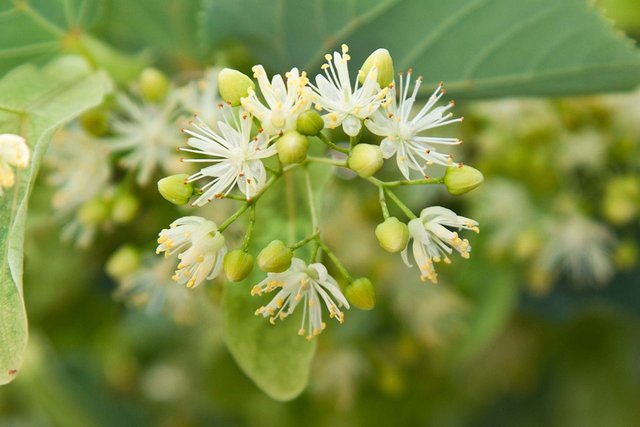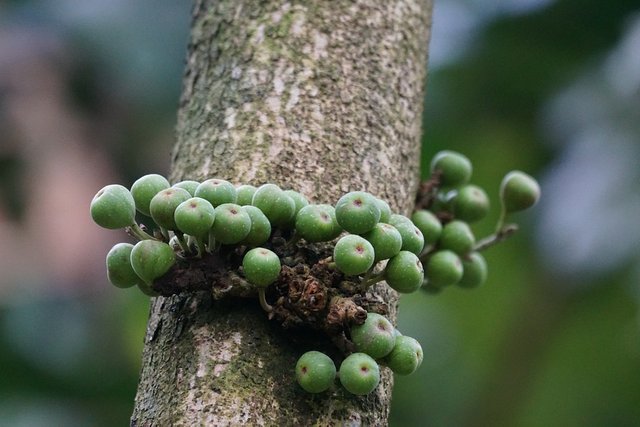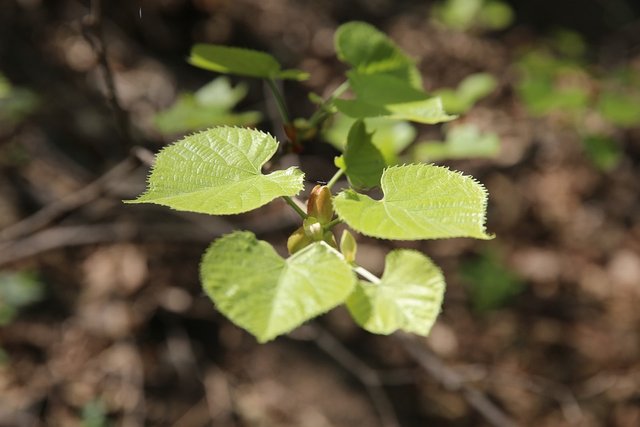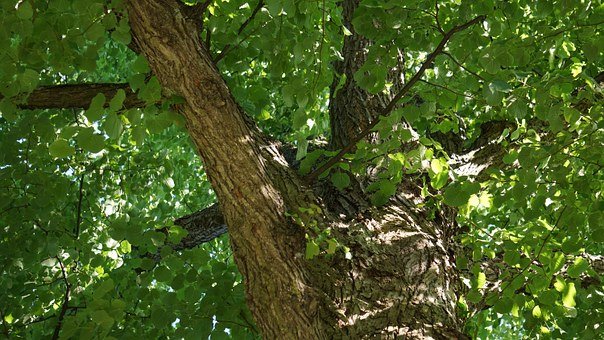Linden: The Incredible Edible Tree
Months ago I was reading an ebook on my Kindle and it was in the genre of fiction-apocalyptic; the story line was going through the process of explaining how the characters were foraging and attempting to survive as the food rations dwindled.
One of the plants, well it was a tree actually, mentioned in the book was called the Linden tree. Now, I'm not sure why or how that specific tree entered my head the other day, as it has been quite some time since I read the book; but regardless, the Linden tree was in my brain swirling around. So me being me, I needed to investigate and research this tree more.
Upon first reading about the Linden tree, I discovered it's habitat is from Minnesota down to Kentucky and way over to the New England states. So my state (Michigan), will definitely have Linden trees growing somewhere; and since there is a 900-acre state game area about 20 minutes up the road, I am thinking come spring, when the ground dries out from the snow that's falling outside today, I can go in search of this tree.
What really intrigued me about this tree was the fact that every part of it is edible. From the flowers to the sap and the bark to the seed. YES! Every part of the tree can be consumed! How cool is that!

Linden Flowers
Linden tree flowers usually bloom in the early summer until mid summer; May until July, and they have a honeysuckle scent and aroma. You can eat the flowers fresh picked, use them to make tinctures (macerate in alcohol) and in herbal teas.
Uses For Linden Flowers
- As a sedative for a calming effect
- As an expectorant for colds, the flu or upper respiratory infections
- As a diuretic
- As an antiseptic
- For anxiety

Linden Seeds

Want chocolate? Well look no further than the Linden tree seeds! Seriously!
From my research, once the seed start to develop, a few weeks after the flowers develop you can pick the seeds and have a short term chocolate substitute.
You can easily crack open the seed covering and inside is a substance, that once you ground up, can be used to make Linden chocolate. I haven't researched a recipe yet; I'd rather wait until I can find some seeds and the tree first.
You can also take the mature seeds and roast them to grind up and make coffee. Roast (325-degrees) the seeds for about 20 minutes (until they are dried out completely) then once cooled, you grind them up. I'm thinking of a nice cocoa flavored coffee in the morning would be quite heavenly.

Linden Leaves

The Linden tree leaves are best consumed while still young; when the leaves are under two-inches in size. The older ones are still edible, but apparently the consistency is different. The young leaves can be added to your salad and with the sweet taste to them, they would be fabulous to add to a walnut and fruit salad. I am imagining once I can find the tree and forage some leaves I'll be adding them to my spinach and arugula (which has a peppery taste) salads for a nice way to balance the greens.

Linden Tree Bark

The bark of the Linden tree has a slightly sweet flavor that is compared to a cucumber. While the bark can be eaten fresh (like a vegetable), you can also dry it and grind it up to make a powder that can be used for for baking; but needs to be mixed with flour for best results.
The bark should be harvested in the early spring; that's when the sugar content is best. It is recommended not to take the bark from the trunk as this could possibly harm the tree. So if you're considering harvesting Linden tree bark, take it from a limb and cut it off completely. You only need to peel back the outer bark to get to the sweet cambium.
According to Dictionary's website, cambium is:
a layer of delicate meristematic tissue between the inner bark or phloem and the wood or xylem, which produces new phloem on the outside and new xylem on the inside in stems, roots, etc., originating all secondary growth in plants and forming the annual rings of wood.

I also learned the sap can be used to make honey and syrup. Just as you tap a maple tree for syrup, the same process is used on the Linden tree. This is not a skill I know, or have the tools to do, but hey, maybe someone reading this in the northern part of the US may be interested in trying it.




Thanks for sharing... Nice to meet you @goldendawne
Nice meeting you also! Thank you for stopping by
It's very easy, thanks for your response.
do you support #homesteading #gardening taq?
Oh absolutely 100% I support all things homesteading and gardening
I am happy to hear it. hopefully this community will grow. good luck @goldendawne
And, the smell from the flowers is heavenly. They smell good enough to eat! Little did I know they were. Great post! Thank you
I am determined this spring to find this tree. I have been fantasizing about the coffee from the seeds!
And I love the smell of honeysuckle! Such a calming scent.
How fascinating!!! Great post @goldendawne !
Upvoted and reblogged!
Thank you! I appreciate the support!
Wow! That is just amazing that every part of this tree can be eaten! We used to have a honeysuckle tree in our backyard growing up and we used suck on those for an afternoon treat. But never would I have thought to eat tree bark. The flowers on this tree are so pretty. So do you plan to get any chocolate out of the seeds once you find the tree? I’ll be looking out for your post about it! 😃
I know- the tree bark really threw me for a loop! But I'm wondering.. I dehydrate cucumber peelings for using in my homemade salad dressings... so now I'm wondering about the bark too. I'll have to keep on researching. I have a midwest foraging book and tonight when I settle in to relax before bed, I'm going to look this tree up in the book.
Not sure about the seed chocolate but still I am curious about the taste.
I'm really looking forward to trying to make the coffee though.
Mmmmmm dehydrating cucumber peelings for your salad dressing sounds really good! I have never made my own salad dressing. I’m curious to see what you’ll find in the book.
I wonder how each part of the tree will taste? What a fun adventure you have before you! Looking forward to hearing more!
Oh yes! I have been dehydrating cucumber peelings for years and using in my own salad dressing. I use kefir milk to make a ranch dressing now and the dehydrated cucumber adds a nice little zing
That sounds really amazing! Thanks for sharing :)
Great article! Huh I guess I just have to plant this tree and I'll get all kind of benefits from it. Chocolate and an expectorant sounds like one of those features you must have!
Thank you! I will admit I'm curious about the chocolate taste of the seeds.
And if I do find this tree and am able to harvest seeds, flowers, leaves and bark, I will be making good use of the items. Now if I can only get it to stop snowing here and for spring to actually arrive.
Interesting read, I wish we had such nice plants here in South Africa. Over here almost everything is tough and dry, the majority of our plants consists of fynbos. The flowers looks nice but the leaves and branches are hard and unattractive.
Oh.. sorry to hear that. I know we have a bounty of plants, flowers and trees here; and it wasn't until recently that I realized all we had.
I have been very interested in this tree as they also call it a “bee tree”! Apparently honeybees should love it! Though I’ve read some conflicting information about different species about honey bees. I guess I’ll have to do some more research! Lol I didn’t know it was edible for us! How cool!
I read that bees are VERY attracted to it; which in turn can give a harvester honey from the tree.
The every part edible really got me. When I was reading the book before the author had mentioned the characters used the flowers for this... and the seeds to make that.. the sap, etc. It really piqued my interest.. then I forgot about it for some reason. Then the other day.. a light bulb went off in my head and I just had to read more about it.
Wow - that's really cool. I didn't know about linden trees though I've seen plenty of streets named linden so now I guess I know where that comes from :) Now I'm on a quest to go find one :)
From what I saw these trees are all over the northern hemisphere. I've probably walked past a few in my time and never knew it.
A town north of us has a hill called Linden Hill for the trees. So they are in this area, but I'm not aware of having seen one. I've always been curious about them and found your post very intriguing!
I never knew about these before reading that book and I have to say, as I have been researching I am becoming more interested in finding out more about them and their uses.
Just wish spring would finally get here so I can start looking for them.
Wow! How cool is that?!
Thanks for sharing! I think I may need to plant one now... :D
I can't wait to get outside in the spring weather and find some these in the woods behind our house.